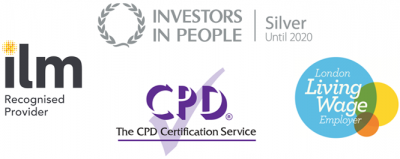Mar
17
2015
Rhetorical devices: add power to your speech
By Tess Woodcraft.
We all use rhetorical devices, all the time, in our everyday conversation – things like rhetorical questions, metaphors to describe a situation vividly, warm words to get people to trust us.
These devices give a special power to what we’re saying - so it is not surprising that speech writers down the ages have searched for, and developed, rhetorical devices to ensure that a speech is as effective as it can be.
And it really has been ‘down the ages’- the Roman lawyer, Cicero, wrote about oratory in 46BC! He said the goal of the orator was to prove your point, to delight and to move the audience. Good advice….
Here are some of the rhetorical devices he identified – which are as useful today as they were 2000 years ago:
- alliteration: a sort phrase where all the words start with the same letter - she is tall, talented and treacherous
- anaphora: repeating a word at the beginning of a series of phrases - bonded labour robs children of their education, it robs them of their childhood and it robs them of their future
- chiasmus: where two or more clauses are related to each other through a reversal of structures - you can take the girl out of the city but you can’t take the city out of the girl
- climax: arranging ideas in a series with increasing force - first they came for the gypsies, then they came for the communists, then they came for the Jews, then they came for me
- irony: implying the opposite of what is actually said, “Yes, I forgot my keys, and of course I just love standing outside in the freezing cold in just a tee-shirt”
- metaphor: where you convey an idea by talking about it as something else - he is flying by the seat of his pants
- triad: talking in threes (see alliteration and anaphora above!)
- wordplay: play on words eg using a pun - a chicken crossing the road is poultry in motion
The other orator from the ancient world who had some useful things to say about speech making was Aristotle, who suggested there are three components of a persuasive speech:
- Ethos - credibility/competence: He said that every presenter should demonstrate their credibility and authority. He is absolutely right! Make sure to mention your experience and draw on your experience during your presentation. And be aware that you will need to demonstrate that your sources and evidence are reliable and trustworthy.
- Pathos – emotion: Aristotle was very aware that it isn’t just what you say, but the emotion behind it that will grab an audience. So motivate your audience by appealing to their emotions and needs eg evoke an emotional response by telling a story; make a promise, and say they can count on your efforts; give the listeners a ‘we’ feeling; ask provocative rhetorical questions and give simple and convincing answers; ask for the help and support of your audience.
- Logos – logic: A speech should not be all emotion, Aristotle knows you must convince your audience with logical argument and explanation – that you need to be clear and considered. So make sure you have real hard evidence to back-up what you are saying, and you should use it well. For example, identify your strongest statistics, make them memorable (60,000 people, that is Wembley stadium, full) and if you have a good statistic use it in several forms (over half, that’s more than 50 percent, 5 out of every 10 people), and always use third party endorsement, from people your audience will respect and trust.
And there are lots more rhetorical devices. It is worth playing around with them if you are developing a presentation or a speech.
Rhetorical questions: statements constructed as questions - “Isn’t it sunny today?” “Why is fracking so controversial?”
Warm words: such as trust, hope, warm, strong, pledge - these are words that encourage people to warm to you and trust you.
Sound bites: memorable ways of packaging your key messages, often using Cicero’s rhetorical devices - “You can take the man out of Yorkshire, but can you take Yorkshire out of the man?”
Humour: unless the topic is very serious (eg declaration of war), there is almost always a role for some humour, or lightness of touch. Every speech is also an entertainment (as well as being informative, inspirational etc). Humour is about timing, personal presence and delivery as much as about actual jokes. It is often self-deprecation.
Parallel structure: parallel structure is repetition of the same pattern of words or phrases. It helps to organise ideas, and can make a speech easier to understand. Parallel structure can also create a satisfying rhythm.
"I have a dream that one day this nation will rise up and live out the true meaning of its creed: 'We hold these truths to be self-evident, that all men are created equal.'
I have a dream that one day on the red hills of Georgia, the sons of former slaves and the sons of former slave owners will be able to sit down together at the table of brotherhood...
I have a dream that my four little children will one day live in a nation where they will not be judged by the colour of their skin but by the content of their character."
Martin Luther King
Where better to finish this blog than with Martin Luther King – one of the most powerful orators of all time. If you trace his speeches – to large gatherings in the open air, and to smaller more intimate groups, he always used many of the devices we’ve talked about here!
These devices are not just for huge set-piece speeches, you can use them in your work presentations, in training sessions, in conference keynotes – they will add colour and weight to what you say.
If you want to know more, the Centre runs a one-day interactive course - Writing speeches: keynotes, presentations and special occasion addresses. This course will provide you with user-friendly techniques for researching and composing speeches to engage, inform, entertain and motivate listeners.
Tess Woodcraft is a trainer at the Centre who works with clients to develop their influencing skills and their own best personal style, and also on corporate communication strategy, helping organisations to increase their impact.


